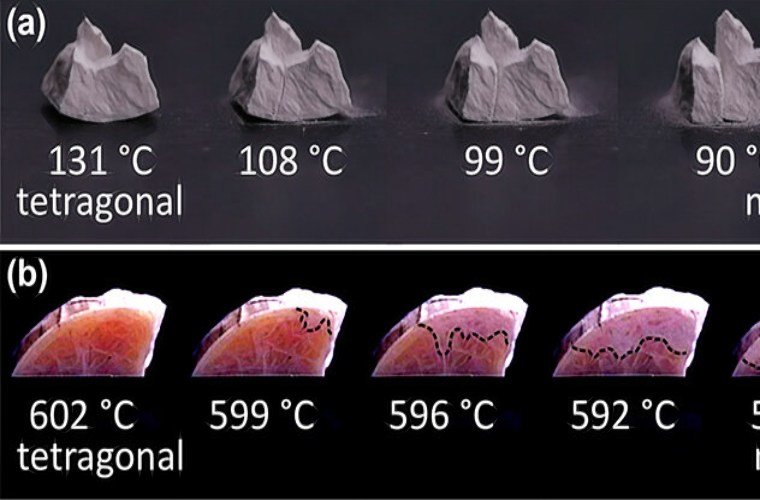A collaboration between researchers from the University of Minnesota Twin Cities and Kiel University in Germany resulted in the discovery of a process that resulted in a shape-shifting form of ceramic materials.
This malleable version of ceramics could lead to significant developments in how medical devices and electronics are built.
Background: Brittle vs. malleable materials
Depending on the material’s capability to become deformed without breaking, it can be considered brittle or malleable. Ceramics, typically, are very brittle. When subject to the slightest deformation, ceramics will shatter completely.
But despite their lack of plasticity, they possess some other properties that make them invaluable in creating electronics. They can be conducting, ferroelectric, or insulating, plus they’re non-corrosive, which is why they can be used in fiber optics, medical devices, space shuttle tiles, and much more.
On the other end of the malleability spectrum, we have materials like shape memory alloys that can be exposed to extreme levels of deformability without breaking. The level of plasticity these materials have makes them perfect for medical devices, such as stents, which are those tiny tubes that are placed into arteries and veins to keep them from collapsing.
These types of malleable metals can change their shapes without going through a liquid phase (in other words, melting). By changing temperatures or pressure, these metals transform while remaining completely solid.
Analysis: Introducing a new material: the malleable ceramic
Inspired by how shape memory alloys can shape-shift, the research team tried to replicate the same behavior in ceramics by creating compositional changes that would tune the distances between atoms to make the two phases fit well together.
The process wasn’t easy, and before they obtained the results they intended, they ended up with some ceramic explosions and weeping.
Eventually, the team managed to get a reversible transformation in their ceramics, as their materials could move back and forth, between different solid phases, without exploding or turning into a pile of powder.
“We were quite amazed by our results. Shape-memory ceramics would be a completely new kind of functional material,” said Richard James, a co-author of the study and a professor in the University of Minnesota’s Department of Aerospace Engineering Mechanics. “There is a great need for shape memory actuators that can function in high temperature or in corrosive environments. But what excites us most is the prospect of new ferroelectric ceramics. In these materials, the phase transformation can be used to generate electricity from small temperature differences.”
The researchers guarantee that the conditions under which this plasticity demonstration occurred can be easily recreated and applied widely, which means that now there’s a way to create malleable ceramics successfully.
“The theory developed on this basis not only describes the behavior but also shows the way to get to the desired compatible shape memory ceramics,” says Eckhard Quandt, a co-author of the study and a professor in the Institute for Materials Science at Kiel University.
Outlook: A whole new (ceramics) world
Everyone has had to deal with the hassle of dropping and breaking a ceramic cup. Can you imagine a world where you wouldn’t have to dread the idea of shattering your favorite coffee mug?
Turning a very brittle material into a malleable one isn’t easy, as it requires delicate fine-tuning and minuscule changes in composition. But the end result is incredible: it’s possible to create a shape-memory ceramic.
Combining ceramics’ conductive, insulating, and non-corrosive properties with this newfound malleability may just open a variety of opportunities for creating improved electronics and medical devices.
Raquel is a forensic geneticist turned freelance writer. She has a knack for technology and a passion for science. You can follow her at scitechcorner.com and on Twitter @theRaquelSantos.

